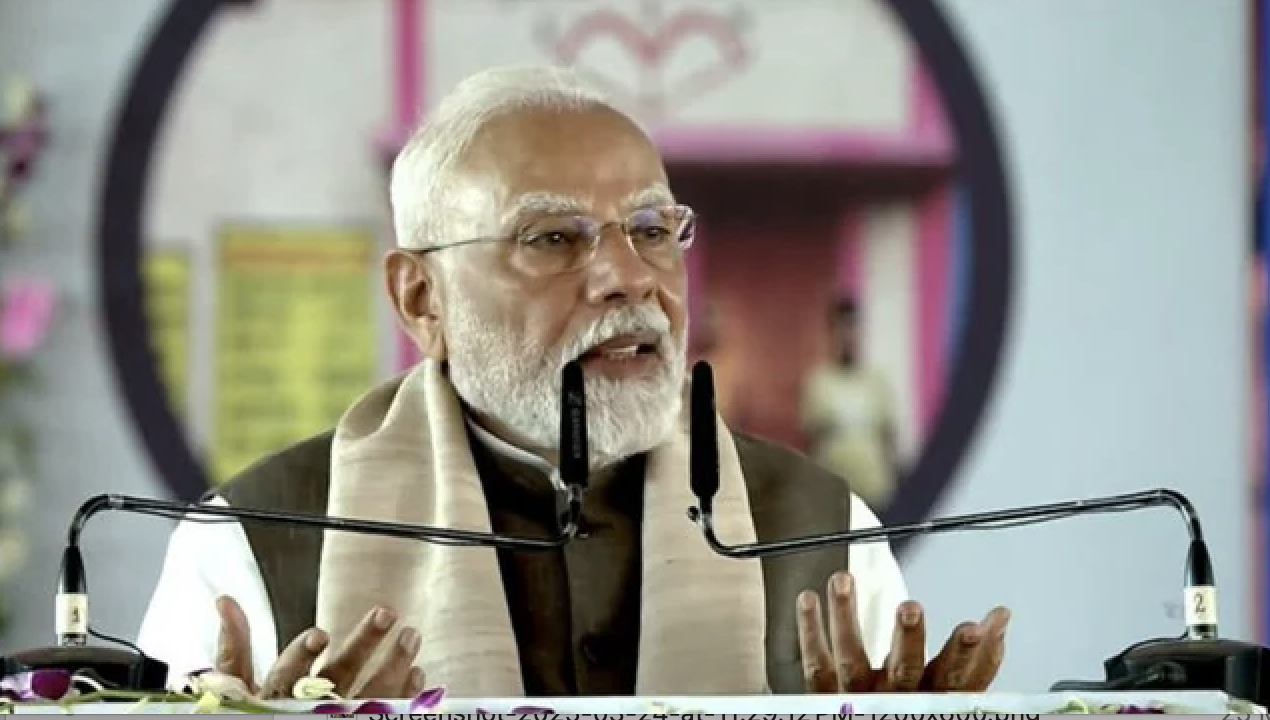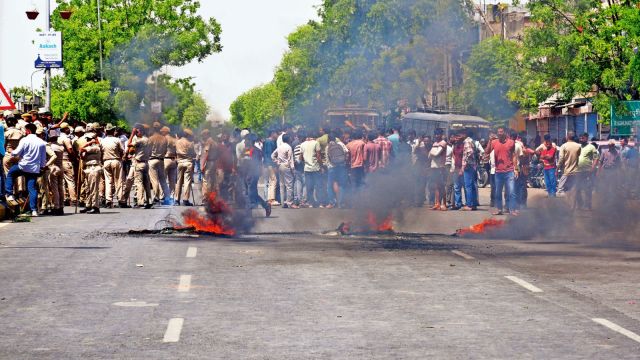Ubiquitous imagery of aggressive, hypermasculine deities across India is a chilling tool of the Hindu right.
In the weeks leading up to the inauguration of the Ram Mandir (temple of Ram) in Ayodhya on January 22, saffron flags dotted streets, marketplaces, and private balconies across the north Indian city. They were attached to bikes, cars, and auto-rickshaws, and forcibly hoisted onto a church by a group of men chanting Hindu nationalist slogans. Featuring an image of the Hindu god Ram standing with a bow and arrow in front of the outline of the temple, the bright-orange flags, a color associated with the Hindutva movement, are a sign of celebration — the deity’s so-called return to his birthplace. The temple was built on contested land where the 16th-century Babri mosque once stood, before being demolished by a Hindu nationalist mob in 1992. The Ram Mandir’s inauguration marked a victory for Hindu nationalists and for the Ram Janmabhoomi movement, spearheaded by right-wing politicians in the late ’80s, to reclaim Ram’s birthplace.
“When the Ram Janmabhoomi movement picked up, there was this idea that Hindus are victims of historical invaders, and so they needed to have more aggressive, more muscular figures to represent Hinduism,” Indian designer and graphic artist Orijit Sen told Hyperallergic. Lord Ram, the hero of the Hindu epic Ramayana, was transformed from a serenely smiling god into a warrior wielding a bow and arrow and sporting a six-pack. Other Hindu gods have also changed in appearance, from the battle-ready Hanuman to the impossibly muscular Shiva. The qualities associated with them have morphed as well, from softer virtues of devotion and humility to a fiery morality. While the idol inside the Ram Mandir in Ayodhya is of an innocent five-year-old Ram who has returned home, the images on the flags, posters, and banners across the country portray him as a fearsome warrior.
Gone are the curved, graceful figures — the Hindu iconography of the 21st century, often in digitally rendered images, conveys a hypermasculine, aggressive new Hinduism to galvanize people into action. And it has become a chilling extension, and tool, of the Hindu right in India.
This story was originally published in hyperallergic.com. Read the full story here.






